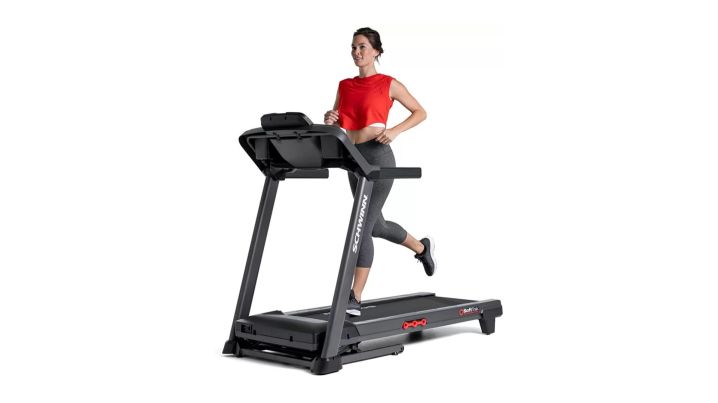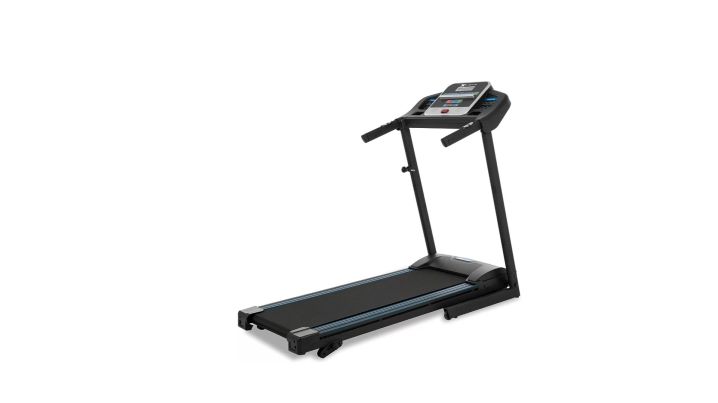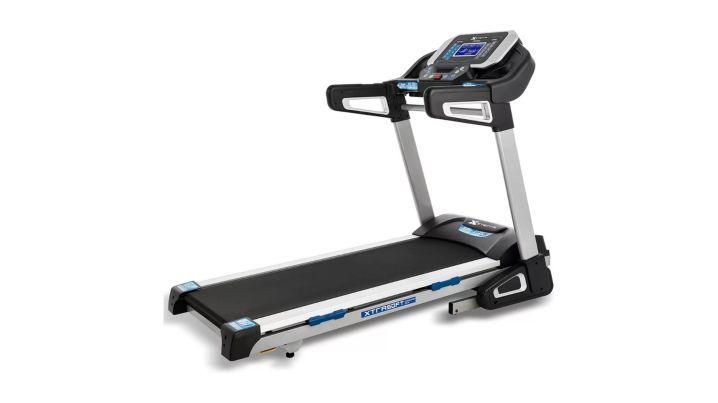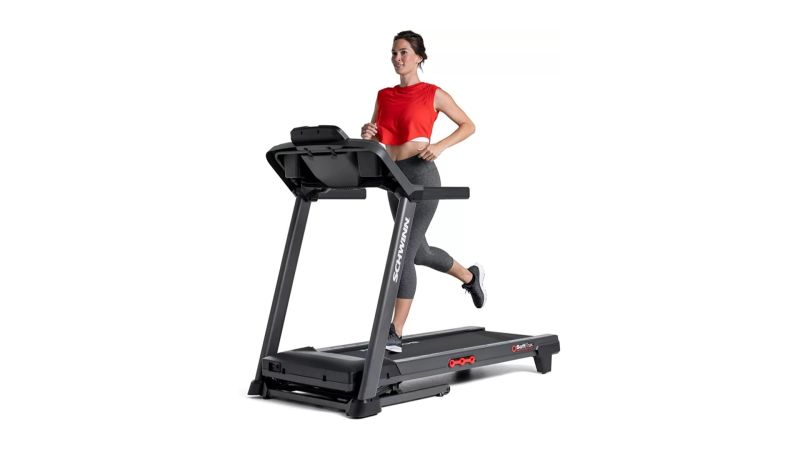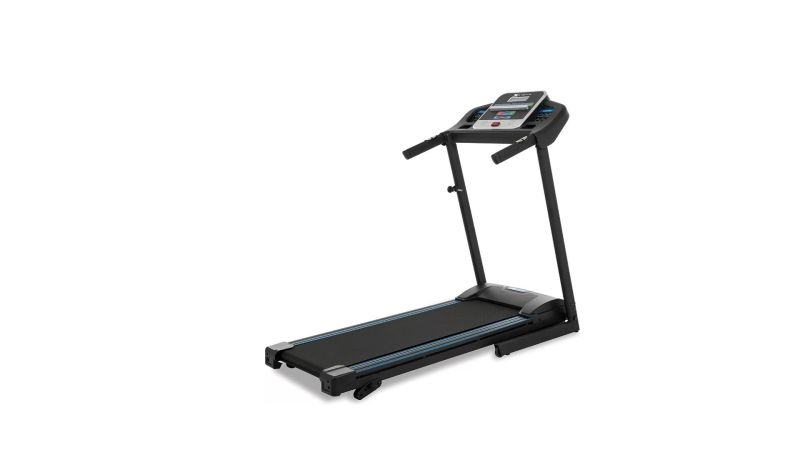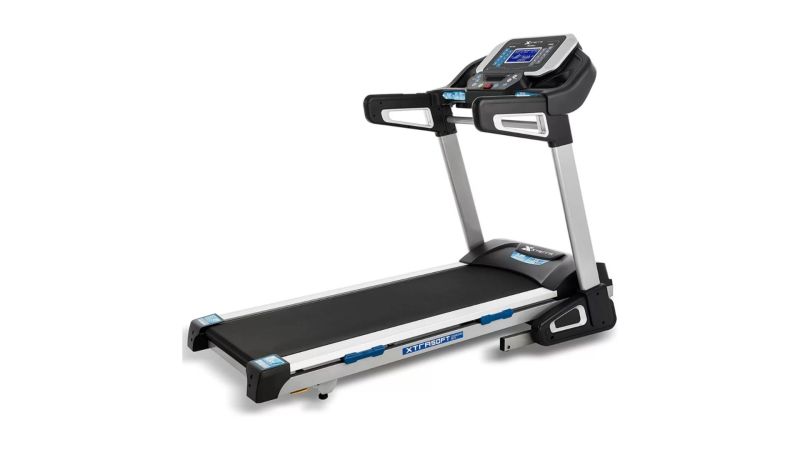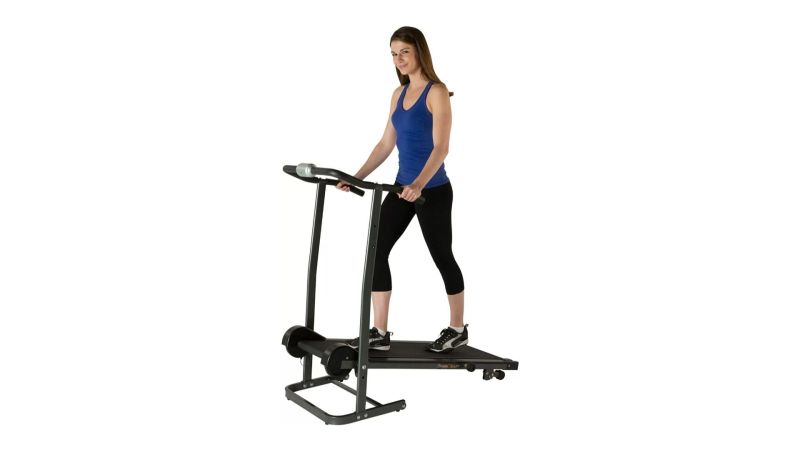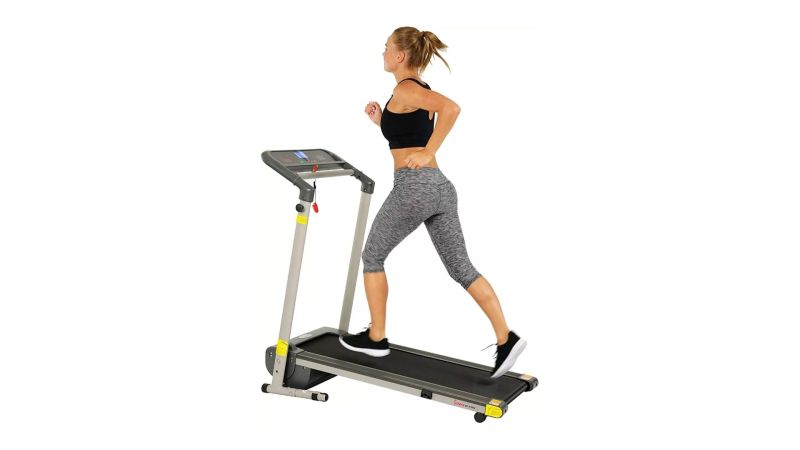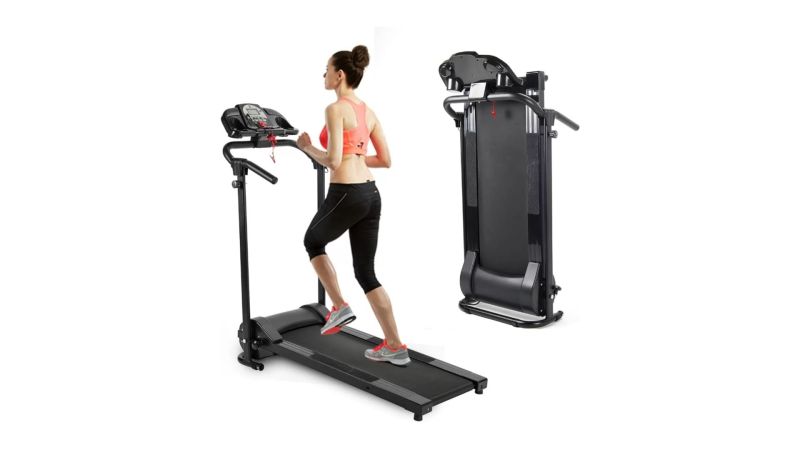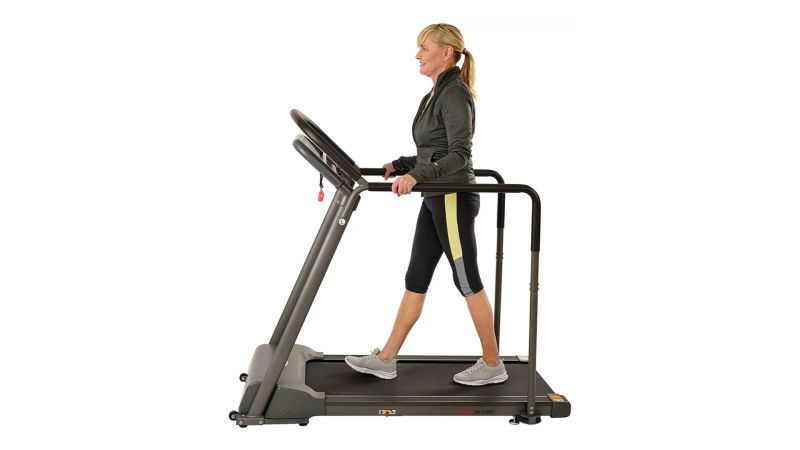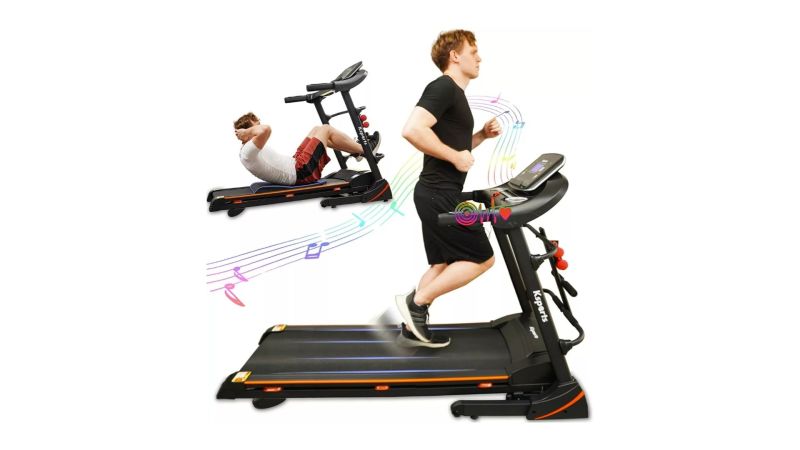We may earn revenue from the products available on this page and participate in affiliate programs.
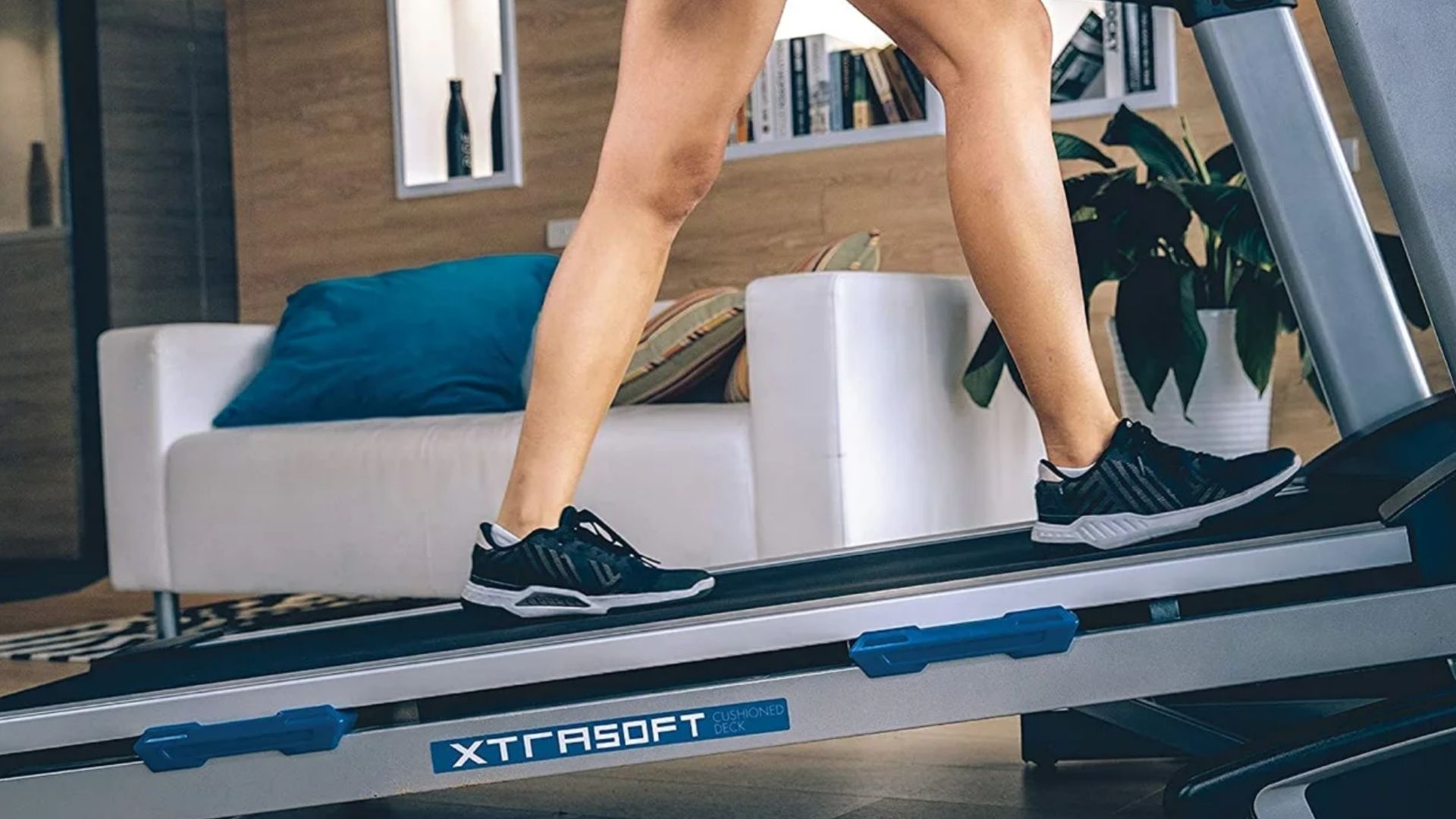
The best treadmills under $1,000 are all going to have one thing in common — they’ll make you sweat. When it comes to running, you either love it or hate it, and during the winter months, it can be hard to get excited about going out and trudging through the snow, ice, or rain. And if you’re getting older like me, you probably don’t bounce back as quickly from spills on icy sidewalks and roads. A good way to avoid the hazards inclement weather brings and still keep cardio in your daily routine is by adding a treadmill to your flourishing home gym.
When you think about treadmills, you might picture rows of hulking machines whirring at a fitness center and quickly dismiss the idea of owning one because of how big and expensive they are. Those two factors definitely used to be a big deal, but the design and production cost of quality treadmills has improved dramatically over recent years, and now it’s entirely possible to get a high-quality, space-saving option for under $1,000. To help you navigate the ins and outs of the budget treadmill world, we’ve put together a list of our favorites.
Best Overall
Schwinn Fitness 810 Treadmill
Best Value
XTERRA Fitness TR150 Folding Treadmill
Editor’s Choice
XTERRA Fitness TRX4500 Treadmill
Best Manual Treadmill
Fitness Reality TR1000 Manual Treadmill
Best Foldable Treadmill
Sunny Health u0026 Fitness T7632 Treadmill
Best Treadmill for Small Spaces
Zelus Folding Treadmill
Best Treadmill for Walkers
Sunny Health u0026 Fitness Walking Treadmill
Best Hybrid Treadmill
KSports Treadmill Bundle
Why you should trust us
In my review about the treadmill’s cousin, I wrote about how I benefited from using an elliptical during my recovery from knee surgery. The low-impact workout machine was an integral part of my initial rehab, but I graduated to the treadmill once my knee got strong enough. By that time, I had deployed to Afghanistan. Because my unit’s doc didn’t want me running on our FOB’s rough roads quite yet, I spent the better part of six months plodding away on a treadmill in the workout tent, staring at the blank, desert-tan flap in front of me. Spending that much time on a treadmill, I had plenty of time to think about features I’d want and desperately wished I had.
Types of treadmills under $1,000
Motorized
The most common treadmills these days use some type of motor to propel the belt. Typical treadmill motors range from two to four horsepower, but they can be more or less than this depending on the model. In general, you want a treadmill with at least a 2.5-horsepower motor if you’re planning to use it for jogging, and at least three horsepower for running. Motorized treadmills tend to be larger than their manual counterparts, for obvious reasons, and therefore will take up more space in your home gym.
Manual
Manual treadmills are exactly what they sound like; treadmills that make you do most of the work. How unfair, right? It’s not like you’re trying to break a sweat or something. Most manual treadmills under $1,000 use dual flywheels to provide efficient movement of the belt, once the user gets it started. There are other types of manual treadmills out there (see example), but these machines can run a pretty high price tag, so we won’t speak of them here. Manual treadmills are great, in that they do not require any electricity to run, and there are a lot fewer technical parts that the owner needs to worry about maintaining.
Foldable
Both motorized and manual treadmills can fall into the category of “foldable,” which are just treadmills that can be folded up or down to be stored more easily or moved out of the way. The majority of foldable treadmills hinge upward near the motor/flywheels at the front of the machine. The machine then stands upright, using much less space than it would have in its normal configuration. Foldable treadmills are excellent for home gyms with limited space or difficult-to-reach areas like up a flight of stairs or around doorways.
Key features of treadmills under $1,000
Running/walking surface
The size of the running/walking surface (or belt surface) is something you’ll want to take into consideration before making your purchase. If you are planning to use your treadmill for running, you should try to aim for a running surface between 45 and 60 inches to allow you to stride out comfortably. Anything less than that, and you’ll want to be cautious because it may be too small. For walkers, the walking surface can be much smaller, but if you ever plan on upgrading to running, you might as well just start out with a larger surface area.
Top speed/incline
The top speed and incline capabilities will usually be a good indicator of the machine’s intended use. Machines with low top speeds and few incline options are usually geared more for walkers and joggers, while machines with high max speeds (10 to 12 mph) and multiple incline options are geared for runners or high-intensity athletes looking for a real challenge in their workouts. It’s important to understand what kind of workouts you want to do, and what you’d like to be capable of doing later before you buy your machine.
Display monitor capabilities
Almost every treadmill comes with some sort of built-in display monitor, but these monitors can range from a few inches to full-on master control boards. All of them will allow you to track the same basic information (speed, time, distance, calories), but increases in price usually come with an increase in tech capabilities. Many treadmill monitors now come with Bluetooth capabilities or USB ports that allow you to sync your machine with various fitness apps, import new workouts, export tracking data, or pipe in your own music. Many treadmills now come with multiple pre-programmed workouts already loaded to get your fitness routine underway.
Benefits of treadmills under $1,000
Budget-friendly
Most of us don’t enjoy the financial freedom of being able to drop a couple grand on an expensive piece of workout equipment and if we did, we would probably just move to a warmer, more temperate climate where running outside isn’t a giant inconvenience for large chunks of the year. With so many quality treadmills under $1,000, at least you can get a good piece of equipment for your gym without having to tank your bank account.
Maneuverability
With treadmills, the rule is usually “the larger the machine, the higher the price.” With our category of treadmills under $1,000, we are looking at some fairly small and lightweight treadmills in comparison to their expensive alternatives. This can be a definite bonus for the home gym setup, as most people want a machine they can easily move or fold up and stow away, which is a luxury you can’t get with many of the more costly machines.
Clear conscious
Let’s face it, sometimes you buy a piece of equipment and it just doesn’t get used. Or you buy it, use it, and then don’t touch it again for long periods of time. It happens to all of us and can be triggered by many things: the pace of life, injuries, short-term memory loss, etc. When life happens and you can’t work out like you want, you won’t have to feel so bad because you didn’t spend your life savings on a treadmill you’re not using.
Pricing considerations for treadmills under $1,000
Under $300
Treadmills under $300 will incorporate most of your basic-level manual treadmills. With manual treadmills, prices are kept low because there is no motor, which means a lower production cost for the manufacturer. Because of the lack of motor and other moving pieces, these machines tend to be geared toward walkers, but on the flip side, these machines are usually the most compact and easy to fold/store. Treadmills in this category also tend to have smaller and less robust display monitors, which will provide you with only the basic workout information and rarely have pre-programmed workout functionality.
$300 to $600
Functionality starts to increase in the $300 to $600 range, and you’ll start to see treadmills with smaller motors and low max speeds (due to less powerful motors). Incline options become more prevalent in these machines and product descriptions begin to detail shock absorption systems and other features that are beneficial when you start to get more into high-intensity cardio training. The display monitors on these models still tend to be pretty basic, though you do start to see some Bluetooth integration and other perks (like double cup holders).
$600 to $1,000
In the $600 to $1,000 range, you start to see some of the perks of the more expensive line of treadmills, such as proprietary impact absorption systems, intricate belt development, and extensive pre-programmed workouts. The machines also start to get a little larger in this category, so it becomes less about space-saving and more about functionality and durability. The display monitors in this price range are usually more advanced, but are mostly still limited to backlit LCD screens, though many offer tablet or smartphone holders and integration methods allowing users to sync up with the manufactures fitness app of choice.
How we chose our top picks
Making top picks in a category like this is not easy given the wide range of options available in the market and the broad range of functionality each of these machines offers. In order to narrow down to the best choices, we did extensive research on options available, best-rated brands, and customer reviews.
We also scoured top-ranking lists from previous years to see what other experts were saying. Armed with all this knowledge, we bounced it off our own extensive experience with treadmills to narrow down to the machines with the features we found to be most beneficial while staying within our price cap.
FAQs on treadmills under $1,000
You’ve got questions, Task & Purpose has answers.
Q. How do I lose weight on a treadmill?
A. High-intensity interval training, or HIIT, seems to be the optimal way to lose weight during treadmill training. In a nutshell, it’s periods of high-intensity exertion separated by moderate-intensity “recovery periods” and repeated to the point of exhaustion. This is accomplished on treadmills through speed changes and incline changes throughout the workout.
Q. How do I move a treadmill?
A. Some of the treadmills on our list are light enough to pick up and carry once folded. For those that don’t fold, many come with base-mounted wheels, so it’s just a matter of tipping up the machine and wheeling it around your workout space.
Q. How do I run on a treadmill?
A. The same way you’d do it on the ground: [lace one foot in front of the other, but faster than if you were walking.
Q. Why were treadmills invented?
A. Treadmills were invented 200 years ago in England and were originally used as “rehabilitation devices” in prisons, meaning they were made to make people suffer for their bad behavior. In a way, that’s what we still use them for today. The more you know!
Q. How fast do treadmills go?
A. Most of the higher-end models of treadmills have a max speed of 12 mph, but a handful of models can get up to 15 mph.
Our gear section
Brett Allen is a humor writer and former U.S. Army Cavalry Officer who served from 2006 to 2010, largely with the 3rd Squadron, 71st Cavalry Regiment of the 10th Mountain Division. The events of his 2009 deployment to the Logar Province of Afghanistan became the inspiration for his recently published debut novel, Kilroy Was Here, which is a dark comedy highlighting the absurdities of war. Brett resides in Ada, Michigan with his wife and kids and is currently working on his next novel. He enjoys all things outdoors to include backwoods camping, backwoods cooking, hiking, and boating, but can more regularly be found mowing, weed whacking, or performing some other form of backbreaking yardwork.
